Introduction
The term ‘skeletonizers’ is broadly applied to caterpillars of several moth families that feed between veins of leaves, producing skeletonized appearance though there are beetles and sawflies that skeletonize leaves.
Palm leaf skeletonizer (Homaledra sabalella) is an insect native to Florida and areas of the Caribbean. It feeds only on palms and in South Florida usually on Canary Island date palm (Phoenix canariensis), cabbage palm (Sabal palmetto), Chinese fan palm (Livistona chinensis), coconut palm (Cocos nucifera), and Washington palm (Washingtonia robusta). Observations indicate that it is more prevalent on palmate than pinnate leafed palms.
Adults and Larvae
Inconspicuous, night-flying, adult moths have a body length of approximately 0.26 inches and a wingspan of 0.63 inches. They are grayish brown with two black spots toward the tip of the forewings. Female moths deposit eggs on the unfolding leaves then cover the eggs with a brown papery material. The adult moths live 3 to 10 days, and do not feed on palm leaves. The well-developed proboscis indicates that it feeds on nectars or other liquids. The caterpillars (larvae) are yellowish white to pale green, cylindrical, and grow to about 0.63 inches. Pupations take place in small, spindle-shaped cocoons within tubes built by the caterpillars as they feed. The larvae are present throughout the year. Several generations occur per year.
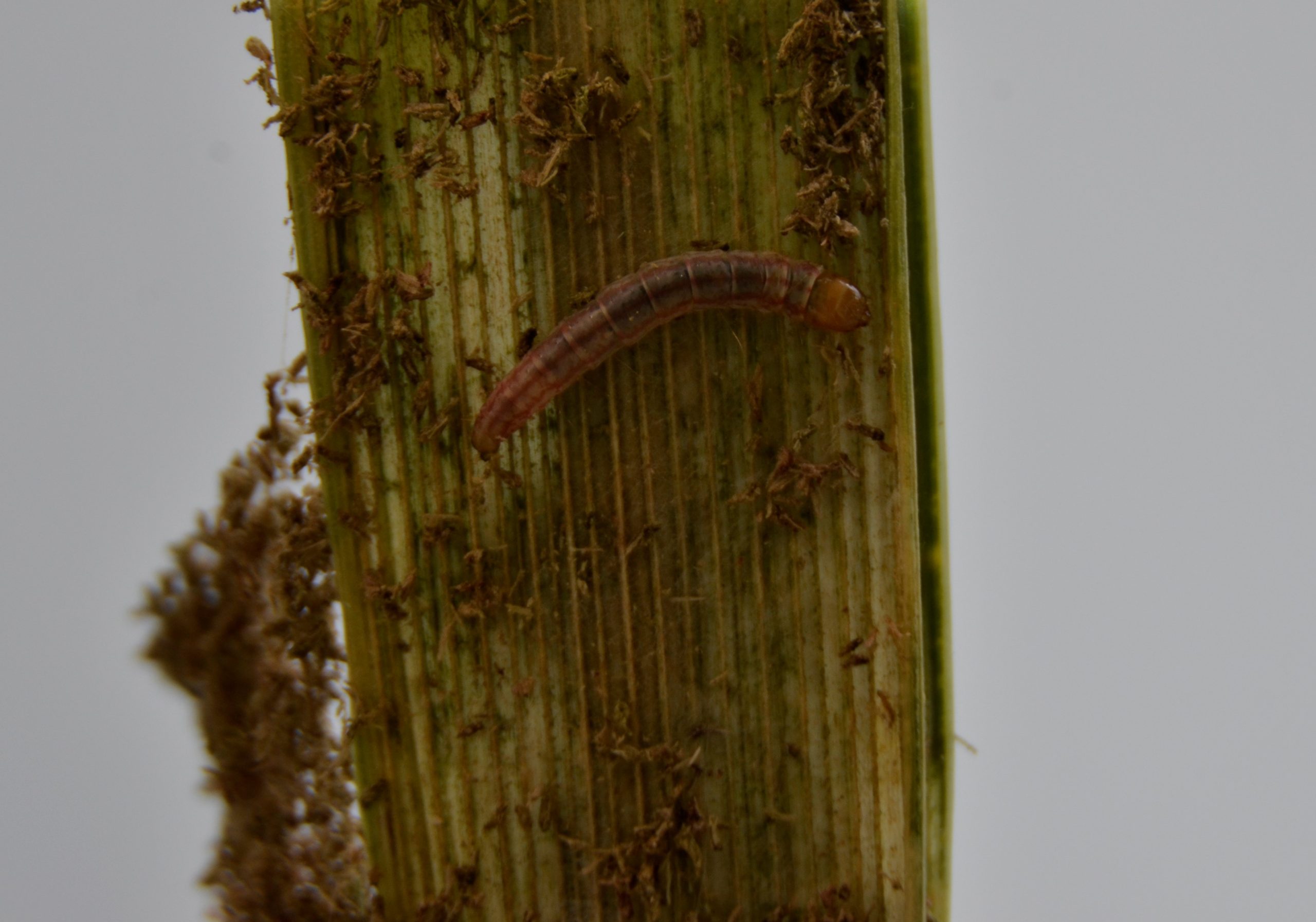
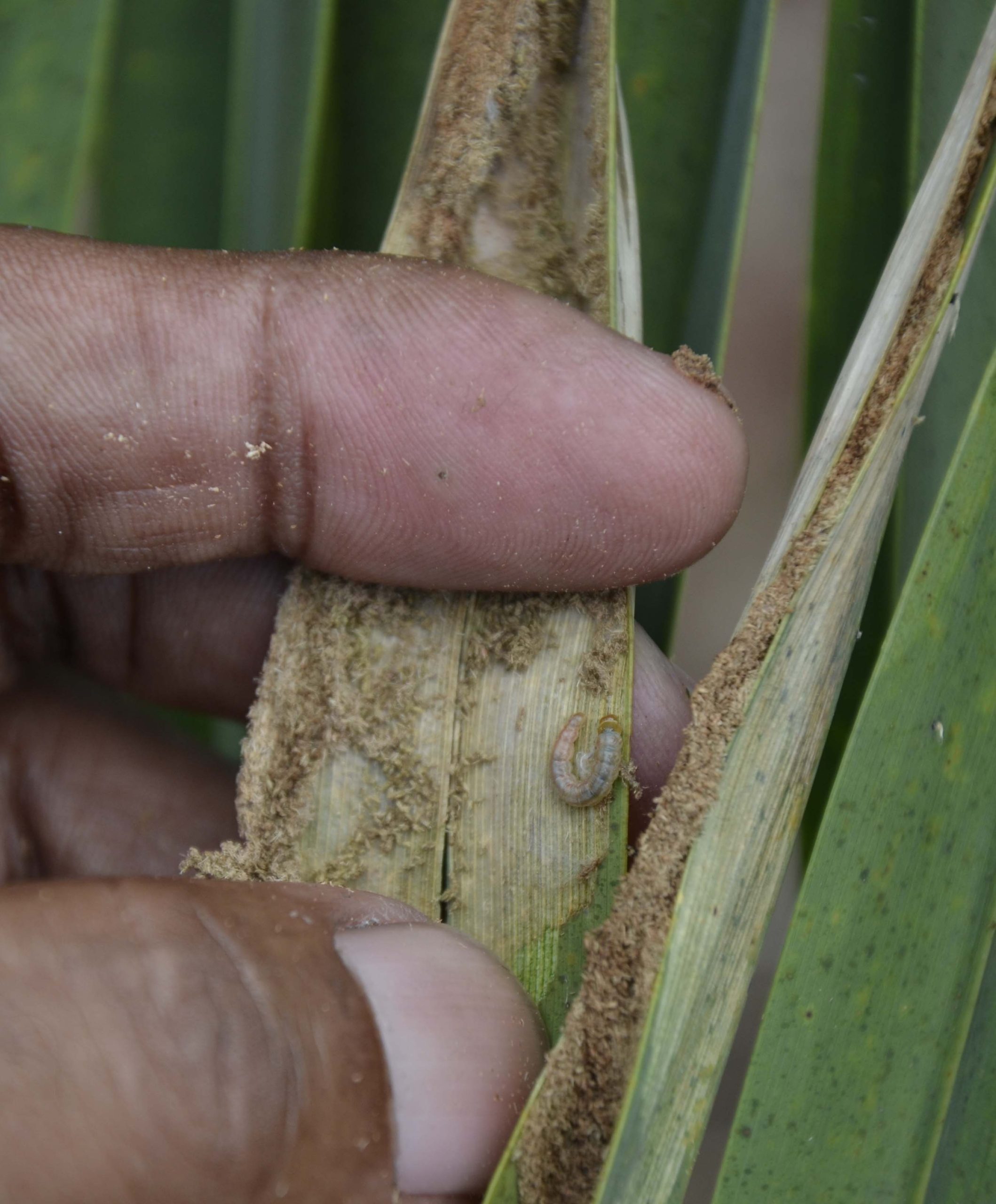
Damage
The caterpillars feed on the lower leaf surfaces of older leaves leaving the veins intact. They are gregarious feeders in colonies of 35 to 100 individuals. The tissue between the veins or ribs is usually the preferred food, but they will also feed on the stems, disrupting the vascular tissue, and causing the death of the entire leaf. As the caterpillars feed, they spin a tough, long, silk tube in which they deposit their fine, brown frass (fibrous excrement). The tube is extended as they grow and feed over an increasingly larger area of the leaf surface. Frass deposits are often the first conspicuous sign of an infestation. The frass looks like fine sawdust and is found on the underside of leaves. As feeding continues, brown tubes of frasses become enlarged splotches.
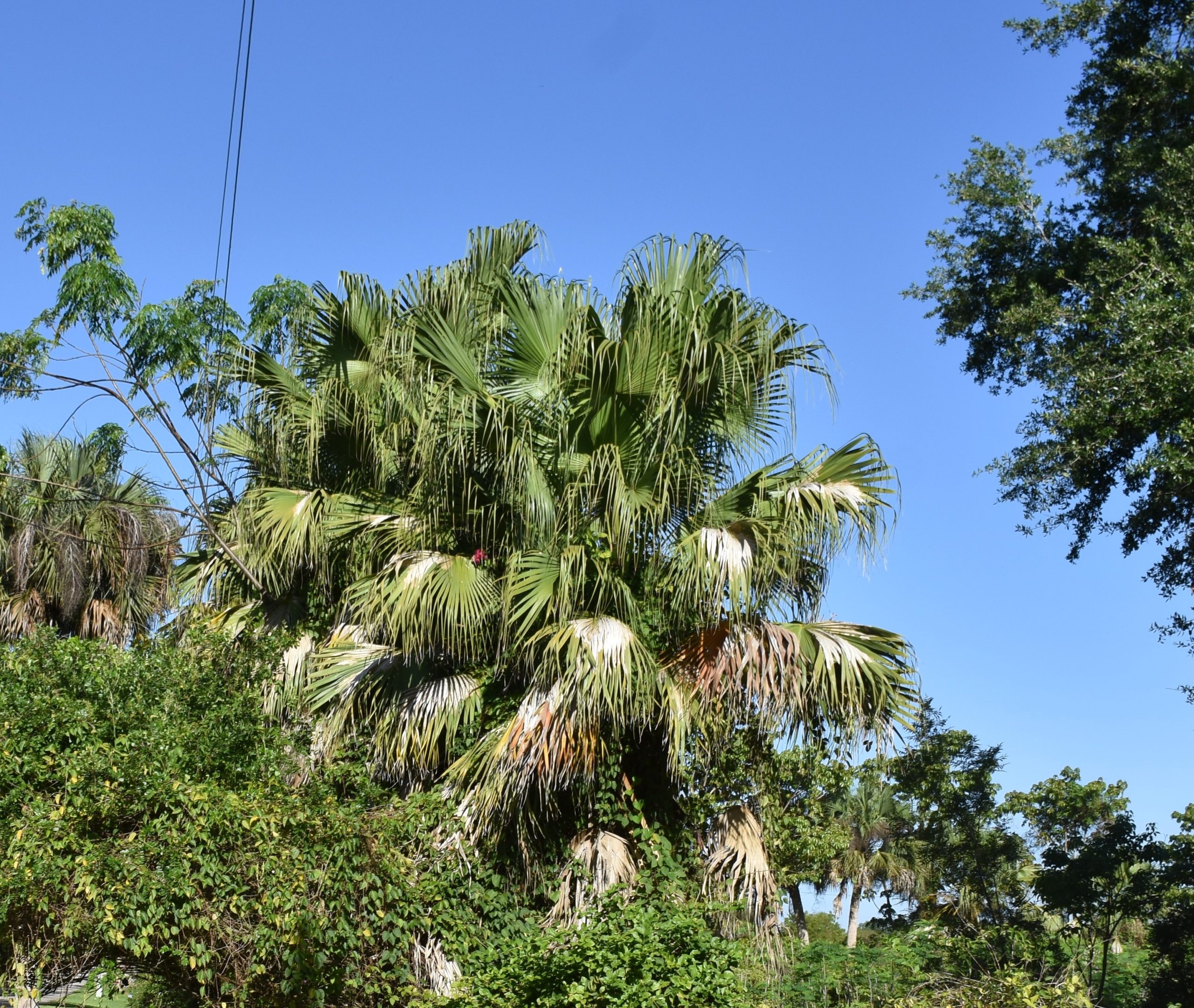
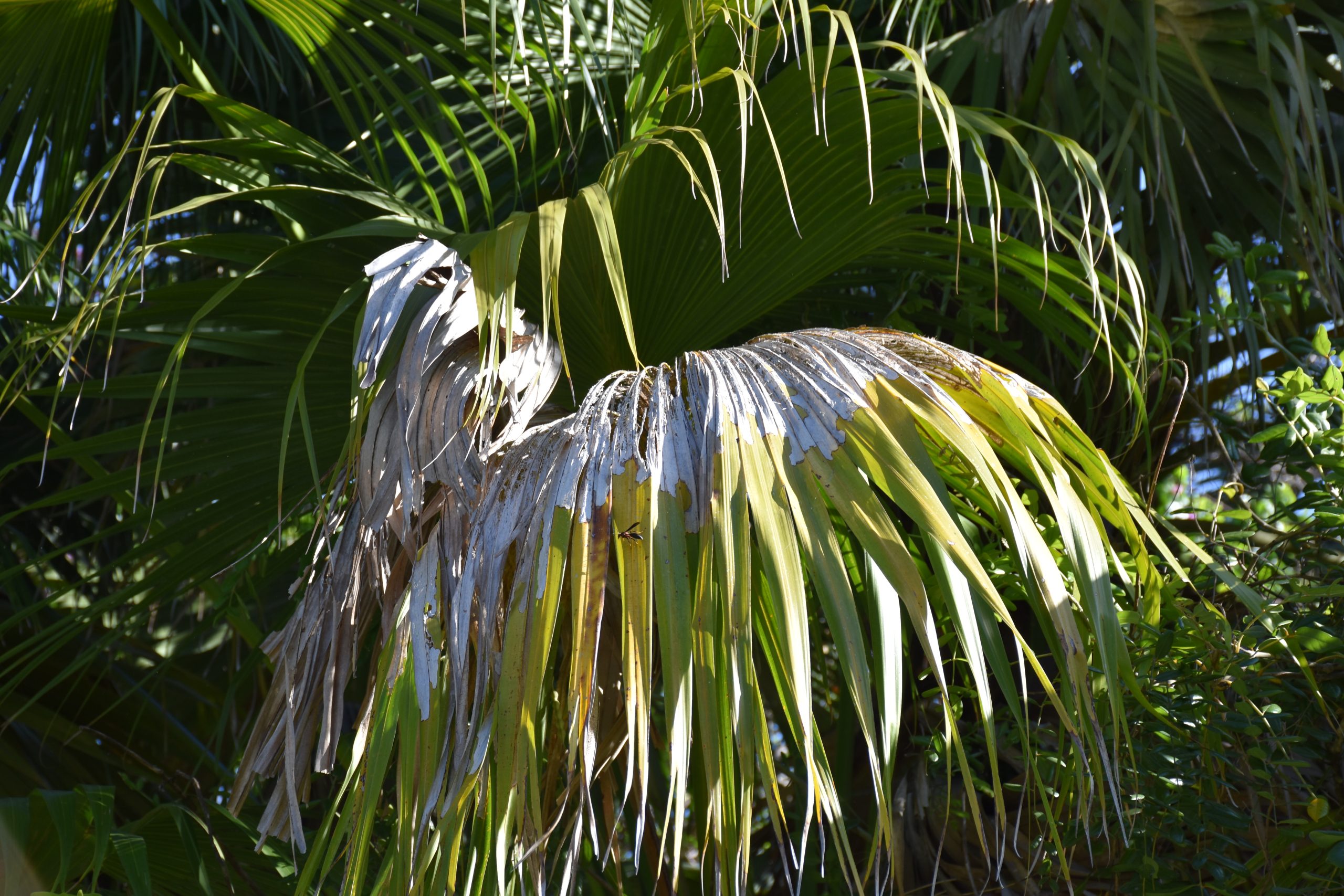
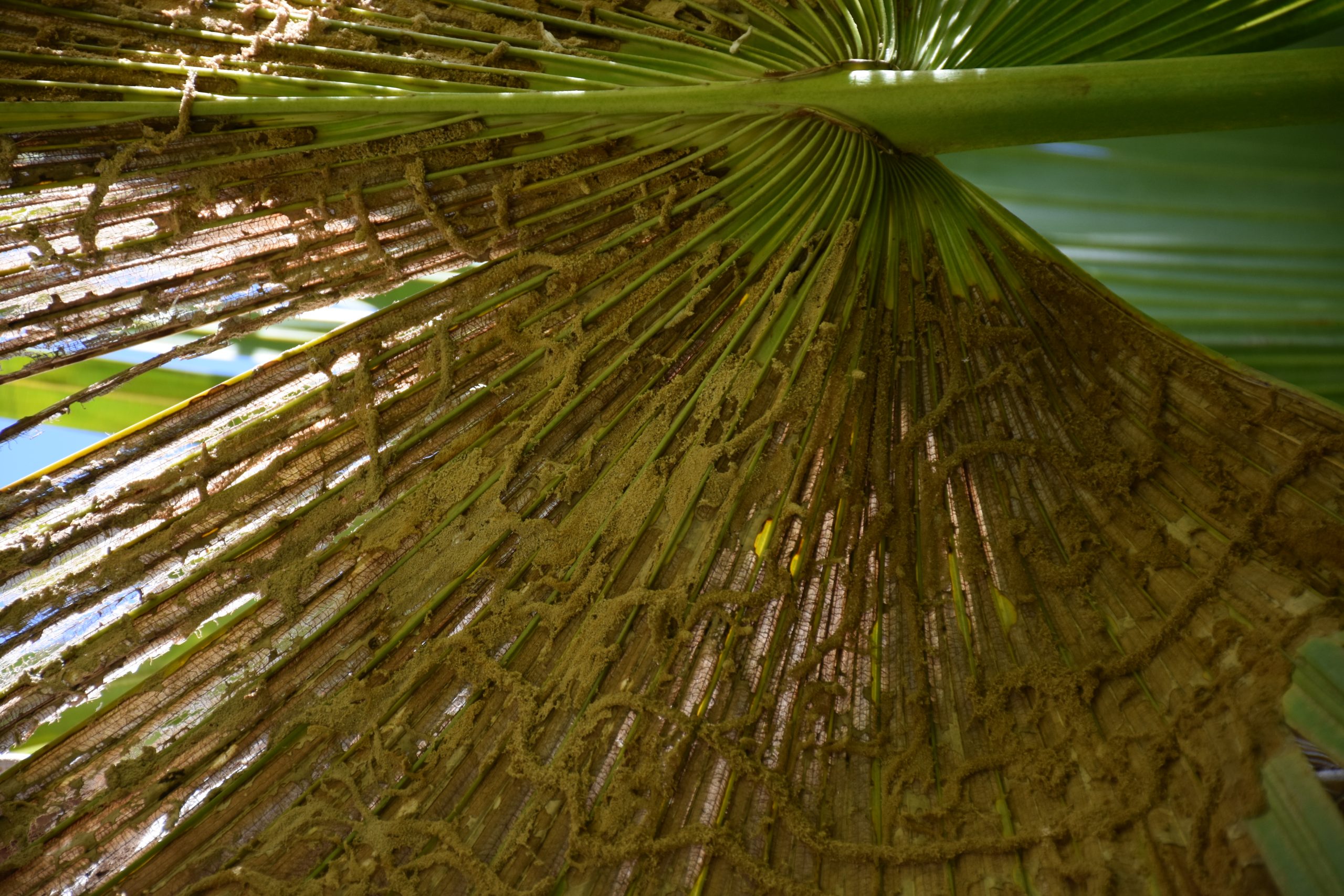
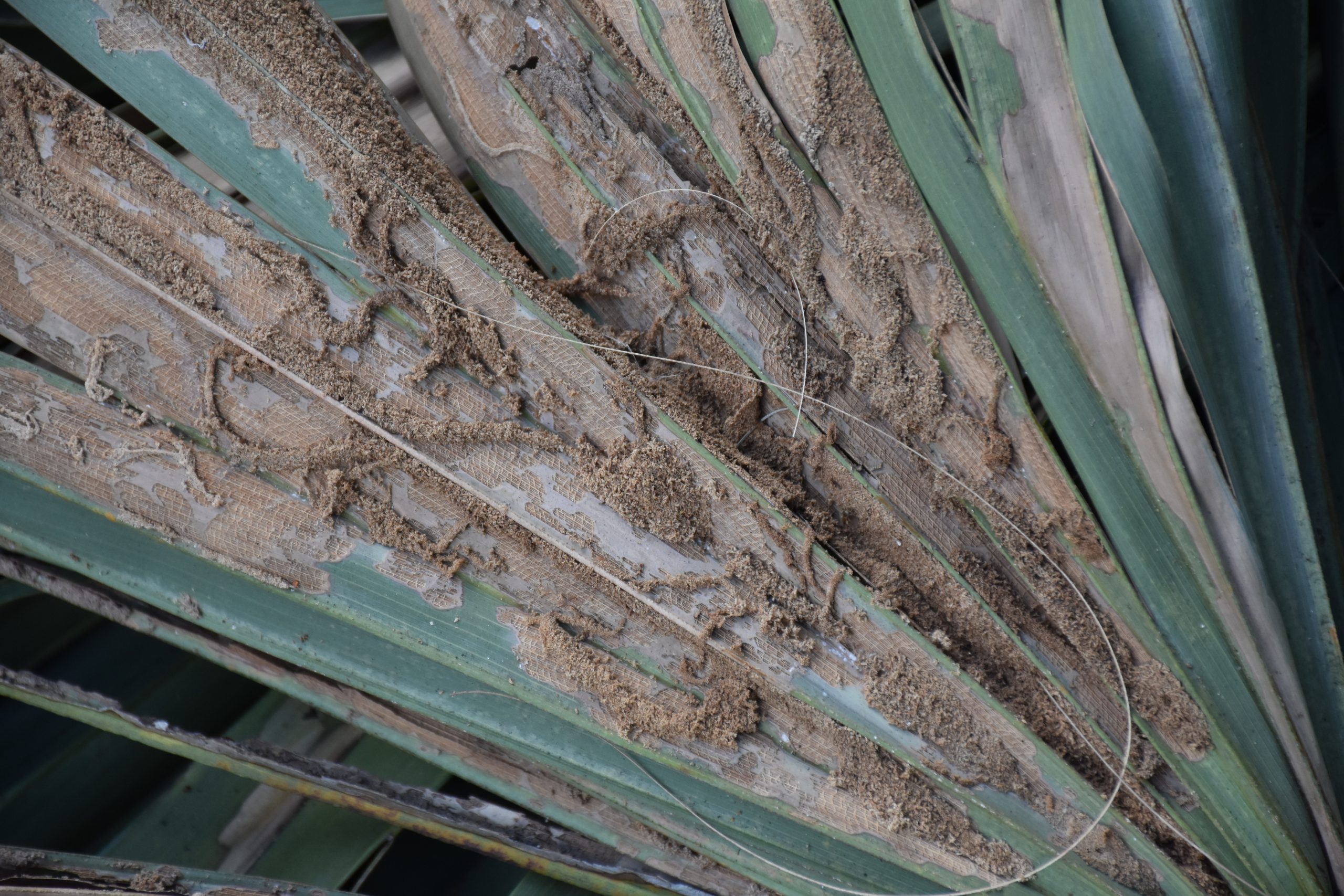
Management
The best control for this pest is to detect its presence early. Washing the larvae off with a high-pressure hose may prevent further damage. Infested leaves can be pruned off, sealed securely in plastic bags, and properly disposed of. After pruning away the infested leaves, treatment with bifenthrin or other insecticides may be useful. However, the applications may be less than effective because of the heavy accumulation of frass protecting the larvae.
If you suspect palm leaf skeletonizers, call your local UF/IFAS Extension Agent. They are there to provide the latest information on the treatment of this and other landscape pests.
All photos by Stephen H. Brown.
References
Culbert, D. F. 2010. Palm Leaf Skeletonizer. University of Florida IFAS Extension, UF/IFAS Okeechobee County Extension Service.
https://www.growables.org/information/TropicalFruit/documents/PalmLeafSkeletonizerOkeechoobee.pdf
Howard FW, et al. Insects on Palms. 2001. CAB International, Wallingford, Oxon OX10 8DE UK
 5
5
